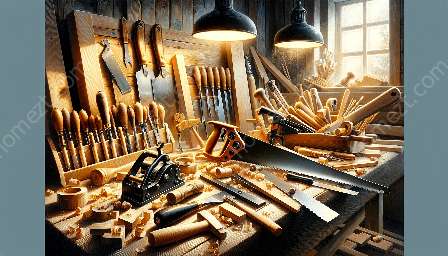Woodworking and carpentry are rewarding and satisfying crafts, but they come with their own set of safety concerns. Whether you're a professional carpenter or a DIY enthusiast, safety should always be a top priority in the workshop and on the job site. This comprehensive guide will provide you with essential tips and best practices for ensuring the safety and well-being of yourself and others in the field of carpentry and domestic services.
The Importance of Carpentry Safety
Carpentry involves working with tools and materials that can pose significant risks if not handled properly. By understanding and implementing safety measures, you can prevent accidents, injuries, and even fatalities. Additionally, prioritizing safety not only protects you and your colleagues but also promotes efficiency and productivity in your work.
Risk Factors in Carpentry
Before delving into specific safety guidelines, it's crucial to recognize the common risk factors associated with carpentry. These include:
- Power Tools and Equipment: Table saws, drills, routers, and other power tools present hazards if not operated with caution and proper safety measures.
- Workshop Environment: Slippery floors, cluttered work areas, and inadequate lighting can contribute to accidents and injuries.
- Handling Materials: Sharp and heavy materials, such as lumber, nails, and screws, require careful handling to avoid injuries.
- Dust and Fumes: Wood dust and toxic fumes from certain finishes and adhesives can pose health hazards if proper ventilation and protective equipment are not used.
Guidelines for Carpentry Safety
Now that we have identified the risks, let's explore essential guidelines to promote carpentry safety:
Personal Protective Equipment (PPE)
Wearing proper PPE, such as safety goggles, ear protection, gloves, and dust masks, is crucial to safeguarding against common hazards in carpentry.
Tool Safety
Always use tools according to manufacturer's instructions, keep them well-maintained, and never bypass safety features. For example, using push sticks and guards on table saws can prevent kickback and severe injuries.
Workshop Organization
Keep your workspace clean, well-lit, and free of clutter. Properly store tools and materials to avoid tripping hazards and accidents.
Fire Safety
Be mindful of open flames, electrical hazards, and combustible materials in the workshop. Install fire extinguishers and ensure everyone knows their locations and proper usage.
Ladder Safety
When working at heights, always use sturdy ladders, inspect them for any damage before use, and maintain three points of contact at all times.
Safe Work Practices
Aside from specific safety measures, practicing overall caution and mindfulness can significantly reduce the risk of accidents. These practices include:
- Communicating with colleagues and coordinating movements in shared workspaces
- Avoiding distractions while operating power tools or handling sharp objects
- Seeking assistance for heavy lifting and using proper lifting techniques
- Taking regular breaks to prevent fatigue and maintain focus
Training and Education
Stay updated with the latest safety guidelines and techniques by undergoing training and investing in continuous education. Whether through formal courses or online resources, increasing your knowledge and skills in carpentry safety is paramount.
Ensuring Safety in Domestic Services
Carpentry safety is not confined to professional workshops but also extends to domestic projects. Whether you're working on home renovations or household repairs, it's essential to follow the same safety principles to protect yourself and others in residential settings. Be mindful of children, pets, and other occupants, and communicate the potential hazards associated with your work.
Conclusion
By embracing a safety-first mindset, you can enjoy the art of carpentry and domestic services while minimizing the inherent risks. Remember that your well-being and the well-being of those around you should never be compromised for the sake of expediency. Prioritize safety, adhere to the guidelines, and make carpentry a safer and more fulfilling pursuit for everyone involved.





















